Gyeongju is the quintessential city for anybody craving an authentic slice of South Korea. A 24-hour trip here lets you switch the high-tech, modern cities, such as Seoul, for forest-bound temples, grassy royal tombs, and some of the country’s best food.
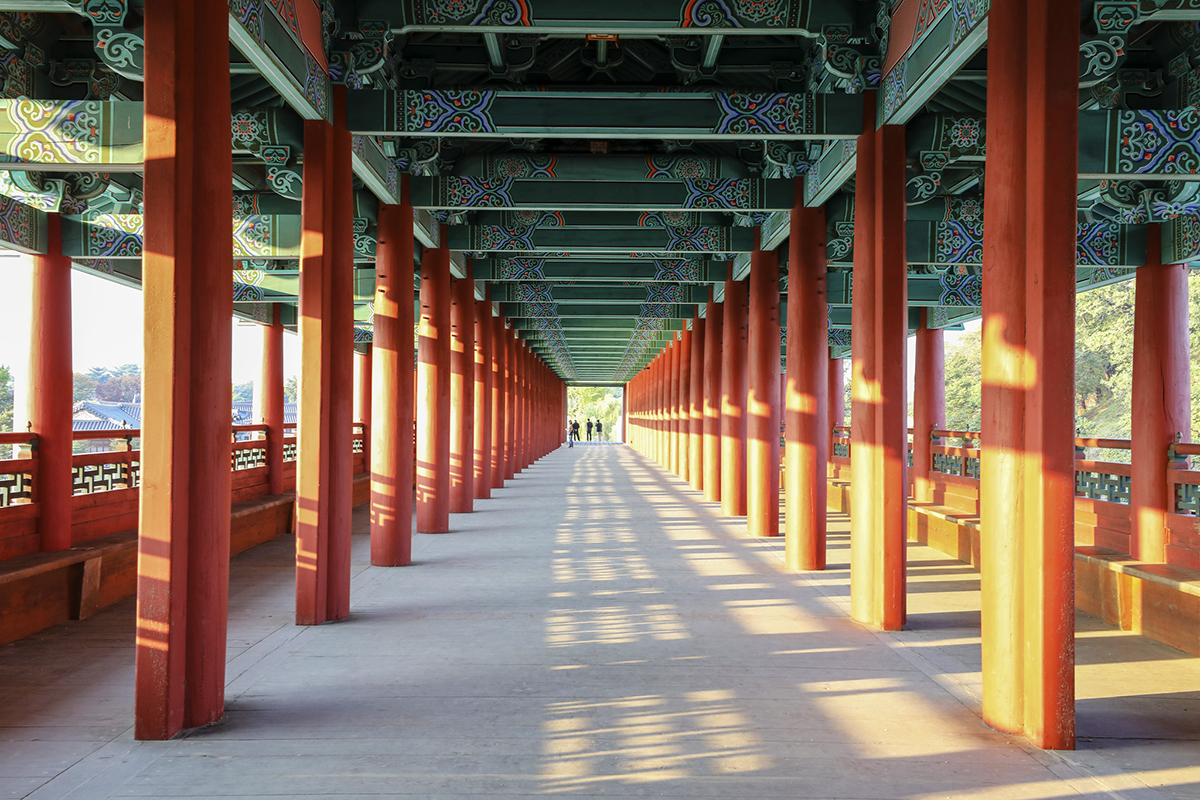
Woljeonggyo Bridge (Photo: Bryansjs via Flickr / CC BY-SA 2.0)
The Silla Dynasty (57BC – 935CE) put Korea on the map as a serious regional power and bequeathed the country a deeper sense of identity and culture than it had ever known before. It is no surprise then, that the kings and queens of this era hold a special place in the hearts of many Korean people. Gyeongju, once the Silla’s capital city, is where most of their burial mounds, known as tumuli, can be found. They look like gentle, grassy hills, often rising up beside pretty hanok (traditional houses).
Gyeongju is South Korea’s primary historical pilgrimage site. Besides the burial mounds there are dozens of Korean Buddhism temples (known as the Jogye Order) and traditional buildings. Bulguksa, a UNESCO-listed temple, is an exquisite example of architecture from the Silla’s golden age, and is still home to many monks today. The large number of devotees who visit sites such as this around Gyeongju bears witness to the enduring importance of Buddhism in the lives of many Koreans.
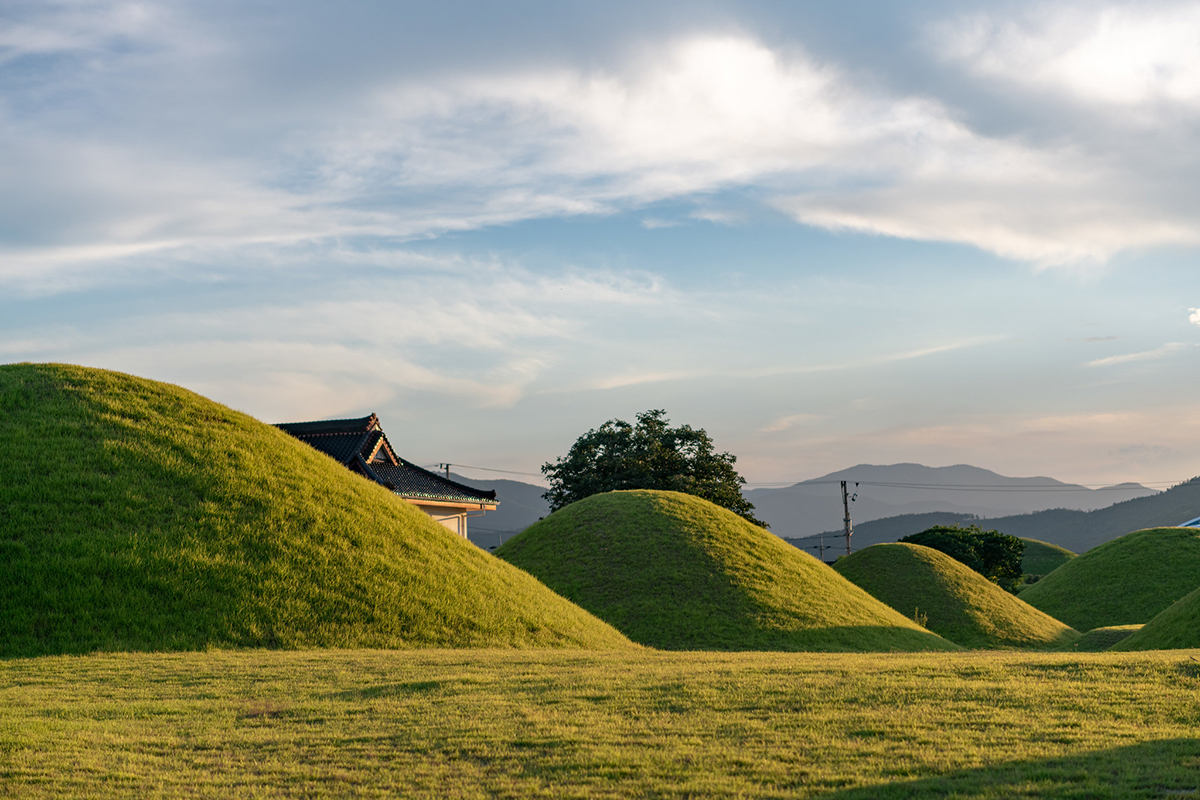
Tumuli burial mounds of Silla royalty (Photo: xiquinhosilva via Flickr / CC BY 2.0)
These traditional influences can also be found in Gyeongju’s excellent culinary scene, which is celebrated for its healthy, delicious dishes. No trip is complete without trying hanjeongsik, which utilises numerous banchan (side dishes). Normally anything you order in Korea will come with three to five banchan on small plates to share. There are many types of banchan, including variations of the ubiquitous kimchi, dried white bait and even pickled lotus root. Hanjeongsik is a collection of roughly twenty different banchan, which accompany a set house special of the day, such as galbi or bulgogi.
Things to Do
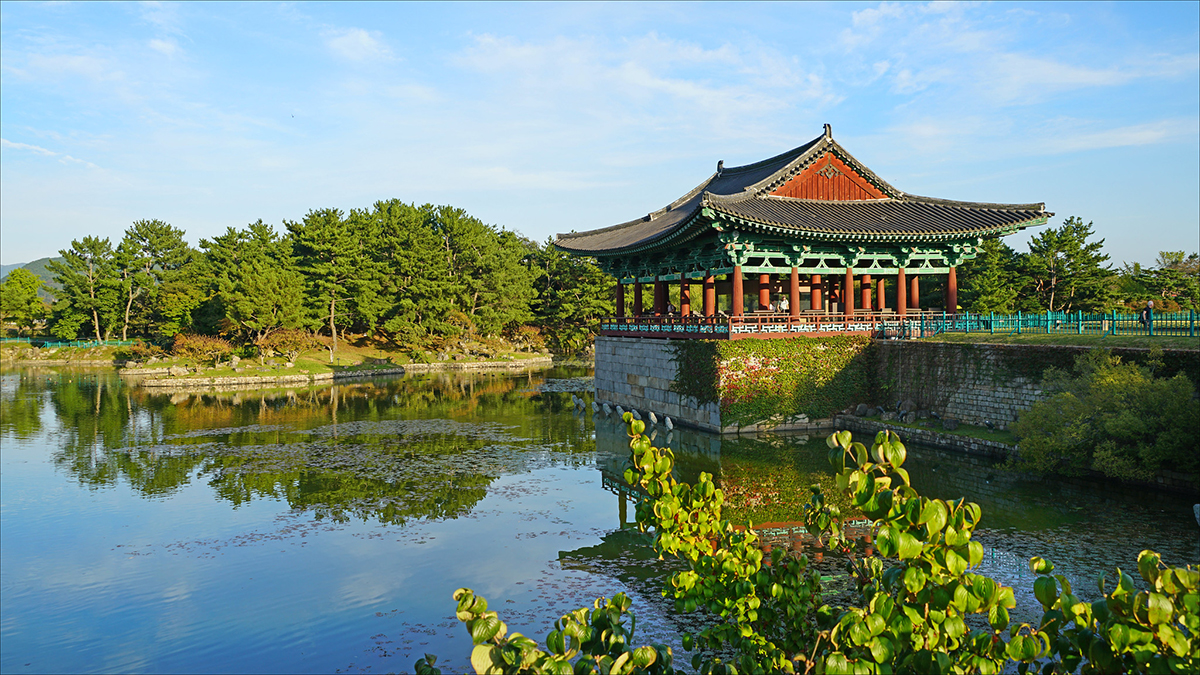
Anapji and Wolji Pond (Photo: Jean-Pierre Dalbéra via Flickr / CC BY 2.0)
The main area of tumuli burial mounds lies to the south of the main town. The regions of Hwangnam-dong and Inwang-dong, to the south of Gyeongju, have highest concentration of important sites. The main sight is Daereungwon Tomb Complex (aka Tumuli Park; 9 Gyerim-ro, Hwangnam-dong), a collection of 28 burial mounds set in pleasant landscaped gardens with a walkway through the mounds. Flying Horse Tomb is 13 metres (42.5ft) high.
Cheomseongdae Observatory (839-1 Inwang-dong), built in 634CE, is one of Korea’s oldest intact buildings. Some even believe it’s the world’s oldest surviving observatory. Meanwhile, the royal leisure spot of Anapji (aka Donggung Palace; 102 Wonhwa-ro, Inwang-dong) is an unerringly photogenic pond, which is blanketed in lotus flowers during high summer, surrounded by pretty, traditional pavilions.
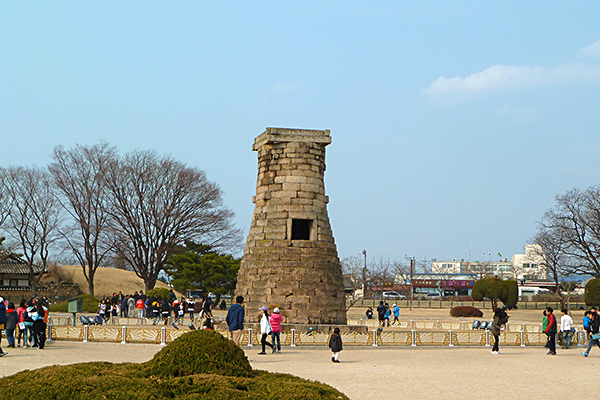
Cheomseongdae Observatory (Photo: Paul Stafford for TravelMag.com)
The other numerous tombs and shrines of Gyeongju are spread across a rather wide area, known as Gyeongju National Park. It is advisable therefore to plan how you wish to get around in advance, unless you are happy to wander and explore. Bicycle hire is a popular way to get around, with a few options usually available near Gyeongju Train Station (173-1 Hwango-dong) and along TaeJong rd. which connects the train station to the express bus terminal.
To find a more serene spot, head to Oreung (67-1 Tap-dong, Gyeongju-si), a collection of five royal tombs. Many believe one tomb belongs to Park Hyeokgeose, founder of the Silla Kingdom. Sungdeokjeon, a shrine just to the south of Oreung built in Park’s honour, would seem to support that theory. The crowds thin out around here and amidst the bamboo and ancient eaves you can get the best sense of old Korea.
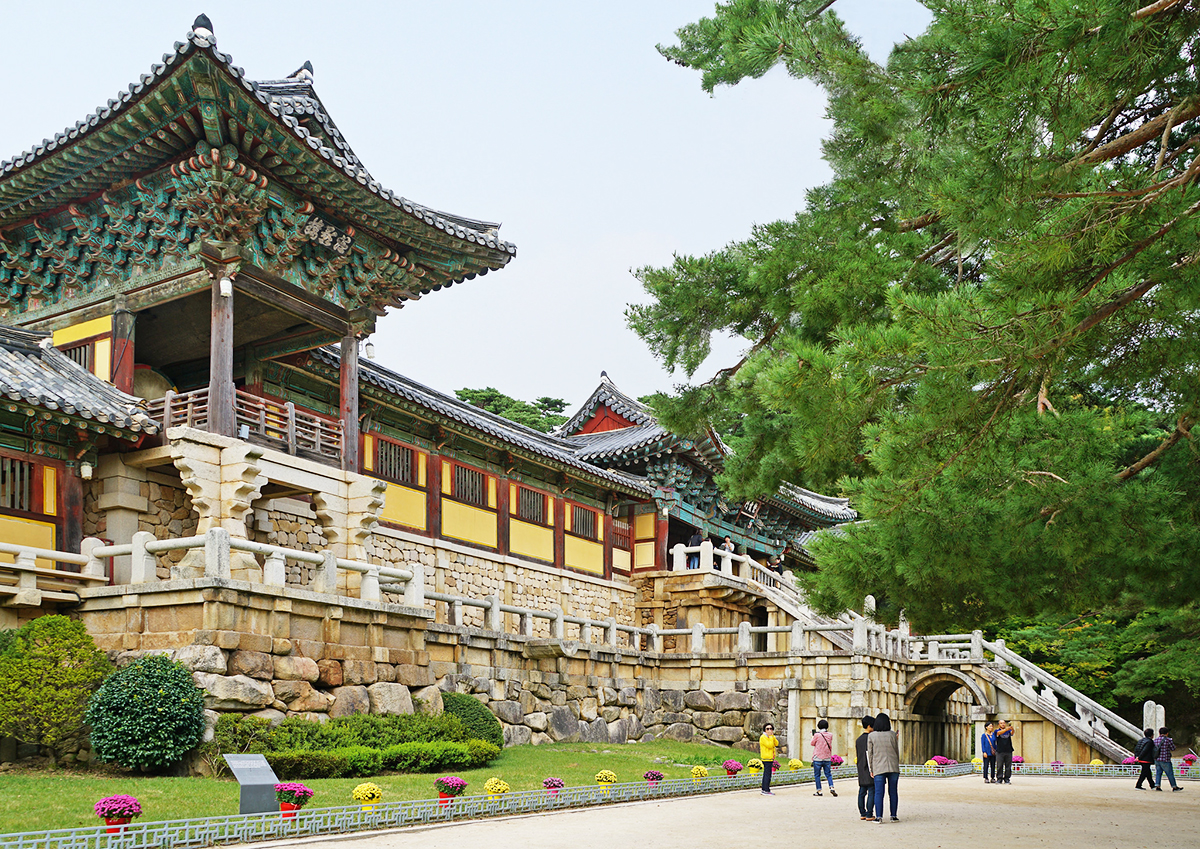
Bulguksa Temple (Photo: Jean-Pierre Dalbéra via Flickr / CC BY 2.0)
Wonderful Bulguksa Temple (15-1 Jinhyeon-dong, Gyeongju-si) is roughly 10 miles southeast of Gyeongju city. It is the most important temple in Korean Buddhism’s Jeogye Order. It is ranked as one of the Korean government’s most important historic sites, as well as receiving UNESCO World Heritage Site status. Buses to the temple gates leave Gyeongju city centre every 20-30 minutes.
Where to stay
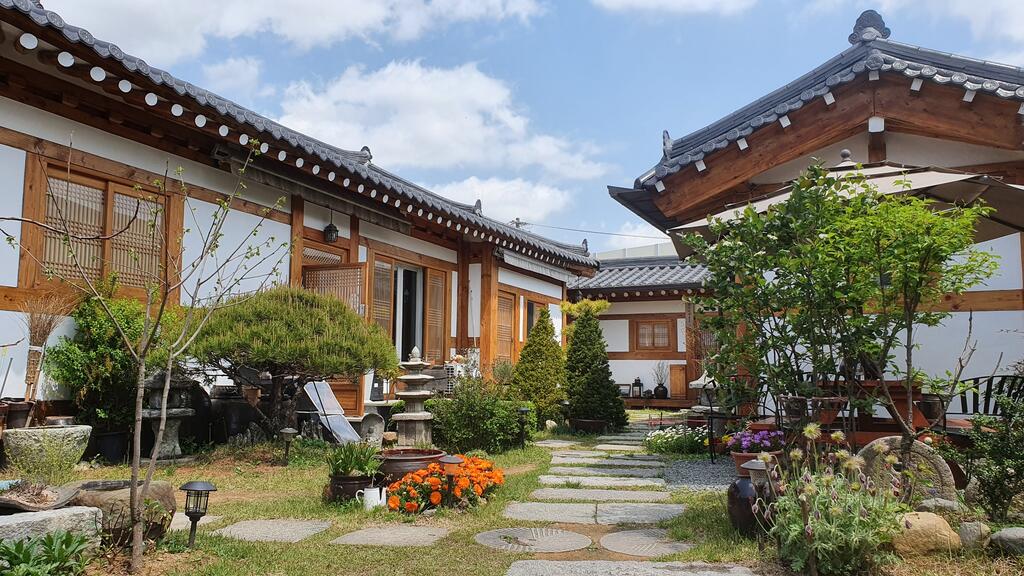
Dorandoran Guest House (Photo: via Booking.com)
One of the great draws of Gyeongju is the natural world set in harmony with the ancient culture. The bucolic scenery round the corner from Doran Doran Guesthouse (812-6 Wolseong-dong), combined with the traditional buildings makes this an excellent accommodation choice. There is also a complimentary breakfast, air conditioning and ondol (underfloor) heating in the rooms.
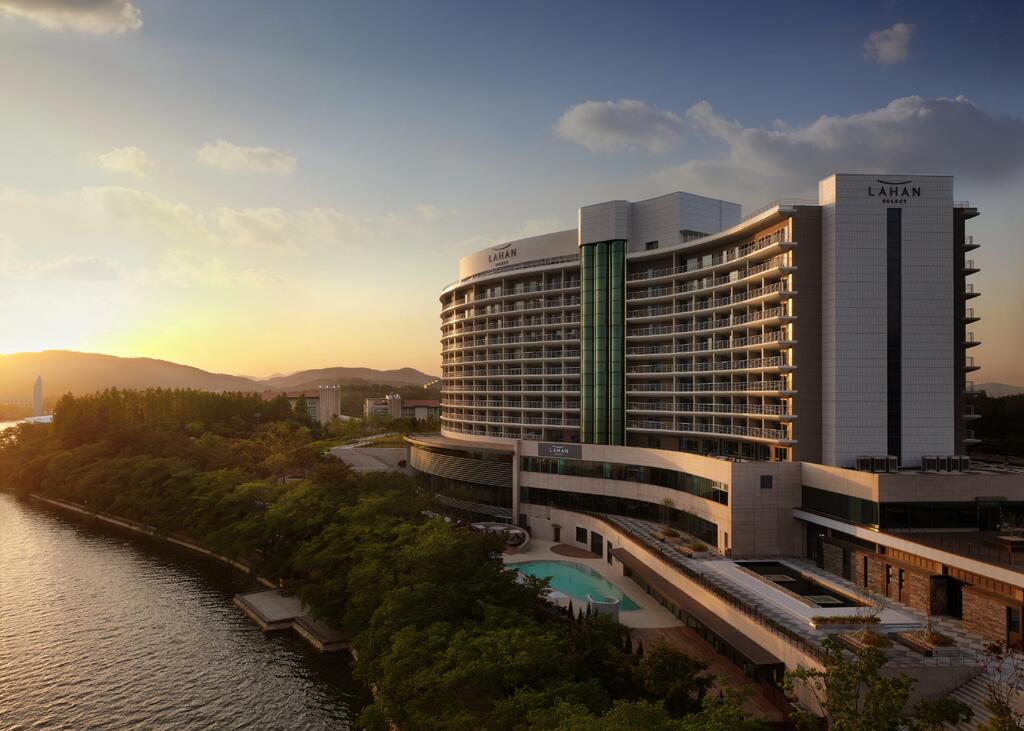
Lahan Select Gyeongju (Photo: via Booking.com)
To keep the theme of traditional Korean living going, Yettle Hanok Stay (9, Balgeunmaeul-gil), located a few minutes away from Anapji, offers a sitting area. Rooms are pleasant, with hardwood floors, and there’s a shared kitchen. Blueboat Hostel Gyeongju (2nd Floor, 125-2, Hwango-dong) is a great budget option just around the corner from the train station with free breakfast. Twin, triple rooms and dorm beds are available. Lahan Select Gyeongju (338 Bomun-ro) is a fancy, five star hotel on the shore of pretty Lake Bomun, in between Anapji and Bulguksa. There are occasionally some excellent deals on here, out of season.
Eat & Drink
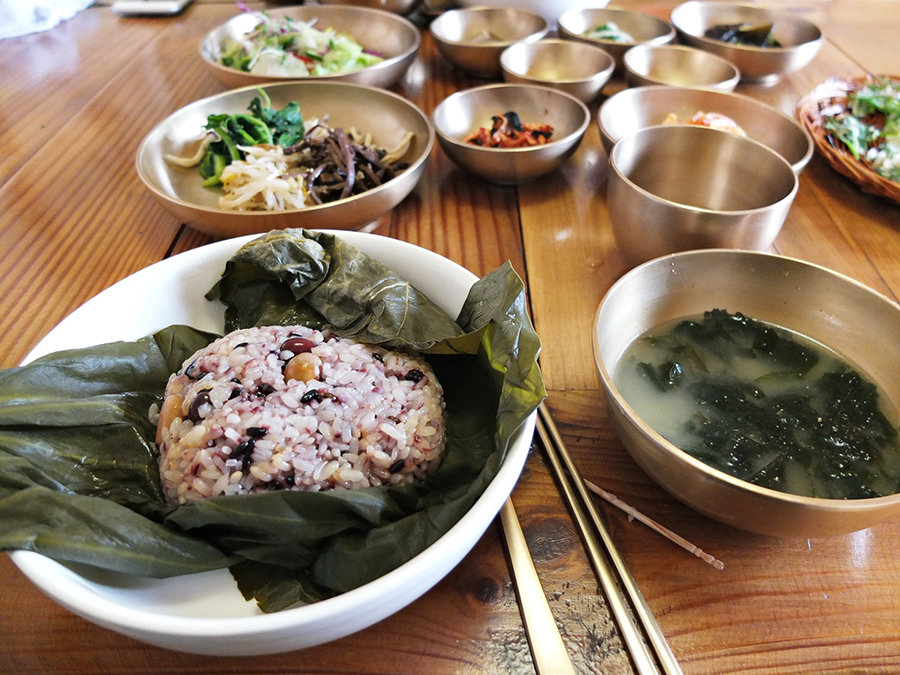
Dining in Gyeongju is a joy (Photo: Heeyon Kim via Flickr / CC BY 2.0)
Many of the hanjeongsik restaurants can be found in the Hwangnamdong region. One of the most enduringly popular hanjeongsik restaurants in Gyeongju is Gyodong Ssambap (328-1 Hwangnam-dong). The main dish is either pork or duck bulgogi and there are at least 20 sides served along with it. Unlike many of the more traditional Korean restaurants, Gyodong has tables and chairs, as opposed to the traditional floor seating, which will suit many visitors unaccustomed to that sort of dining.
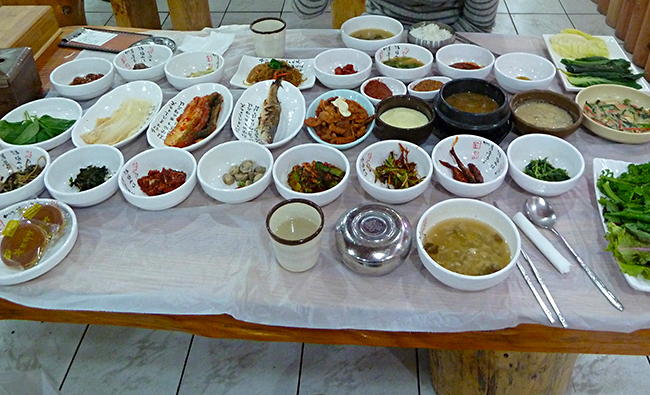
Korean hanjeongsik with the many banchan (Photo: Paul Stafford for TravelMag.com)
Eepungnyeoguro Ssambap (155 Cheomseong-ro, Hwangnam-dong) is as fun an experience for hanjeongsik first timers. If two people are dining together you can expect to receive around 30 different small plates, including kimchi jjeon (pancake), a number of different types of kimchi, including full leaf, mushroom, pork and soup dishes. It may be visually impressive, but the taste proves that it’s more than just quantity trumping quality.
For an absolutely top-notch pork galbi, head to Daegu Galbi (Bukjeong-ro 5). There is nothing fancy or unique about the exterior, it looks like any other independently run restaurant in Korea, with the main menu items written on the doors and windows. Galbi is their speciality and it is served up in artisanal pewter dishes with a good selection of lettuce and mint leaves in which to wrap the meat.
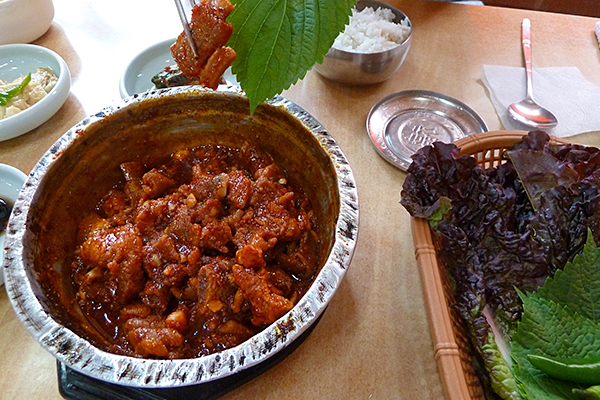
Pork Galbi at Daegu Galbi (Photo: Paul Stafford for TravelMag.com)
Fine dining in a traditional setting is done best at Yosokkoong (Kyochanan-gil 19-4). There are both indoor and al fresco tables, the former in beautiful pine wood rooms; the latter under wood-beamed roofs so that rain or shine, you can enjoy your meal closer to nature. The cuisine is exquisite. There are four menu choices, each consisting of a large selection of small dishes, almost like tapas. Try the Anab, which comes with hoe (pronounced more like an aspirated ‘hway’), which is the Korean version of sashimi.
Cafe Sabaha (57-16 Wolseong-dong) is a cafe designed for the Instagram generation. Glass cases full of figurines stand many feet tall in one room, while elsewhere the cafe has a more traditional vibe, with wood-panelled walls, lofty ceilings and throne-like, high-backed chairs. There’s a nice, leafy patio area with pod chairs too that is great in the evenings. Coffee, cake, fresh juices and smoothies are popular menu items, and there’s also bottled and draft beer available.